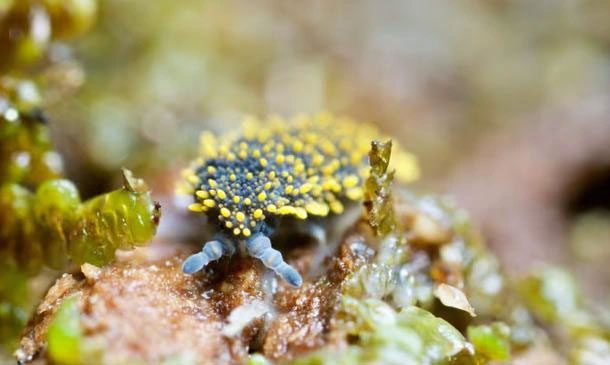Soil is home to 90% of fungi, 85% of plants, and over 50% of bacteria, making it the most biodiverse living environment on Earth, according to recent research.
According to the Guardian, newly released figures show that the number of species living in soil has doubled since scientists’ estimates in 2006. At that time, scientific statistics suggested that only about 25% of species on Earth lived in soil.

Holacanthella spinosa species living in soil, found only in New Zealand – (Photo: PNAS).
“We found that soil could potentially be home to 59% of life, including everything from bacteria to mammals, making it the most diverse biological environment on Earth,” the researchers stated.
Furthermore, they believe that the actual number could be even higher as soil has not been thoroughly studied.
The lead researcher, Dr. Mark Anthony, an ecologist at the Swiss Federal Institute for Forest, Snow and Landscape Research, noted that prior to this study, scientists had not been able to determine which environment on Earth housed the most species. Many scientists suspected it was soil, but lacked evidence.
“Soil organisms have a significantly larger impact on the balance of our planet. Their biodiversity is crucial because the life in soil affects climate change, global food security, and even human health,” Dr. Anthony added.
Soil is the upper layer of the Earth’s crust and consists of a mixture of water, air, minerals, and organic matter. It is where 95% of the planet’s food is grown.
A teaspoon of healthy soil can contain up to 1 billion bacteria and over 1 kilometer of fungi.
The researchers estimated that there are approximately 100 billion species in total. They then used theoretical estimates and data analysis to identify the species found in soil. They defined a species as living in soil if it resides there, on it, or completes part of its life cycle in soil.
The research was published in the official journal of the National Academy of Sciences of the United States, PNAS.
About one-third of the Earth’s land area is currently severely degraded, and 24 billion tons of fertile soil are lost each year due to intensive farming, according to a study on “Global Land Outlook” supported by the United Nations.
Pollution, deforestation, and global warming also harm the soil.


















































